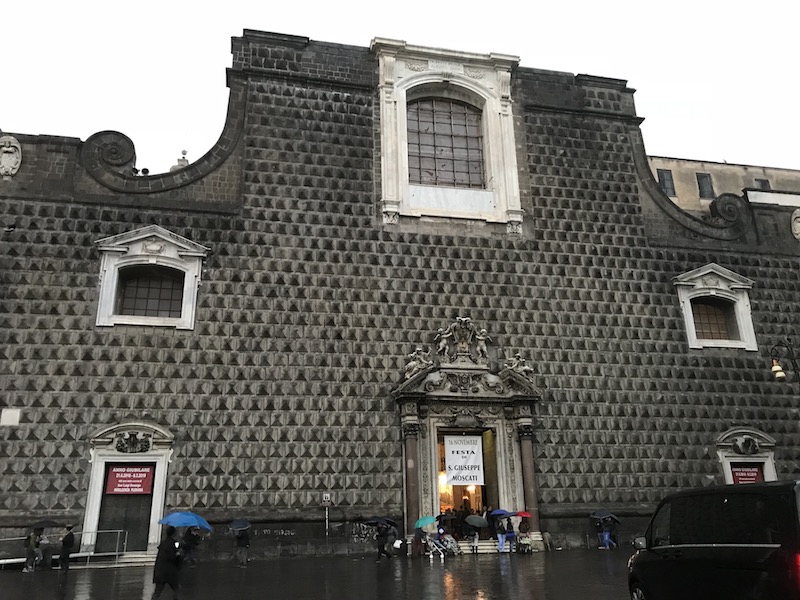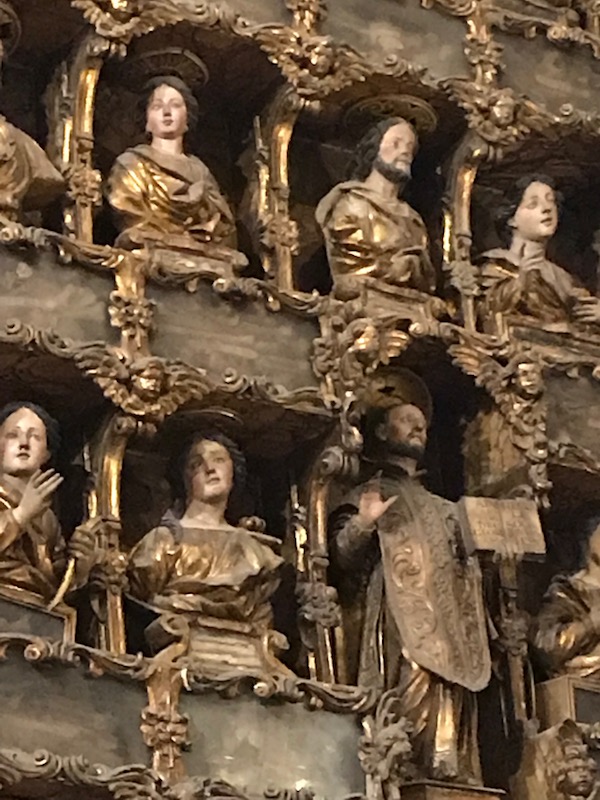Our Blog - Southern Italy - Naples
Naples is one of the oldest continuously inhabited urban areas in the world, first settled by the Greeks in the second millennium BC. It has the distinction of being the most bombed Italian city during World War II. Though the population of the city did not rebel under Italian Fascism, Naples was the first Italian city to rise up against German military occupation. The city was completely freed by 1 October 1943, when British and American forces entered the city. The Germans did a lot of damage as they left the city, since they burned quite a few buildings and planted time bombs that exploded in various areas of the city.
After dropping off the rental car at the airport and taking the bus into town, we came by Castel Nuovo, also known as Maschio Angioino. It was built in 1279 during the reign of Charles I, the first king of Naples, and is one of the city's most known landmarks. As a "proper" castle, it has 5 large towers and is surrounded by a moat. The "thing that doesn't belong" is the white marble triumphal arch, which was added in 1470 to commemorate Alfonso of Aragon's entry into Naples in 1443.



The first evening, we headed out for dinner and grabbed a few pictures of the bay at night, as well as the Fountain of Neptune. The fountain, which was created in 1600, is now in its 7th location around the city.


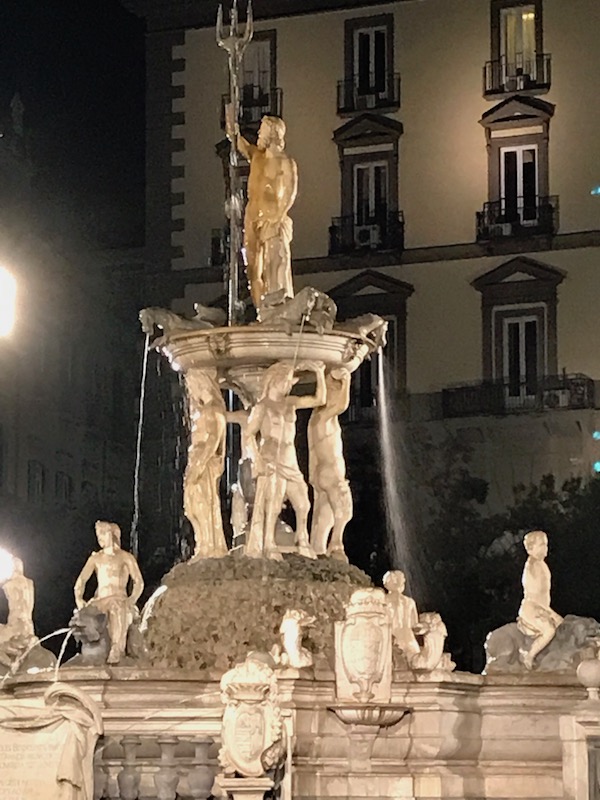
Near our B&B is Piazza Giovanni Bovio (or Piazza Borsa because the Stock Exchange (borsa) building is there). This large open area used to be the site of a market, but it was converted into this square during a rehabilitation period after a cholera epidemic in the late 1800's due to lack of clean water. Additional changes to the square came about with the opening of the subway, when the equestrian statue of Vittorio Emanuelle II was added. A note about the subway here .. it took 10 years to build the station here because they found remains of a Byzantine fortification dating back to the Severi dynasty, which lasted from 146 to 245 AD. The Stock Exchange building is a neo-Renaissance building, designed in 1895. Flanking the front steps are two winged genii carrying torches and riding bronze lions.
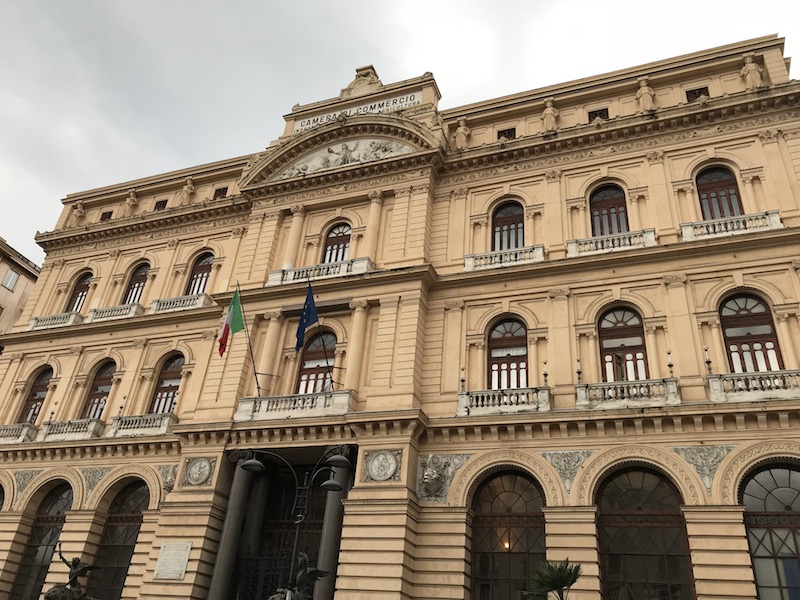




The main city square is Piazza del Plebiscito. It was planned under the the reign of Joachim-Napoléon Murat (Napoleon's brother-in-law) when he was King of Naples in the early 1800's, but constructed later under King Ferdinand I. On one side is a church that is dedicated to Saint Francis of Paola, who had stayed in a monastery on this site in the 15th century. The church is similar to the Pantheon in Rome with the façade fronted by a portico and has two side chapels and a 53 meters tall dome.
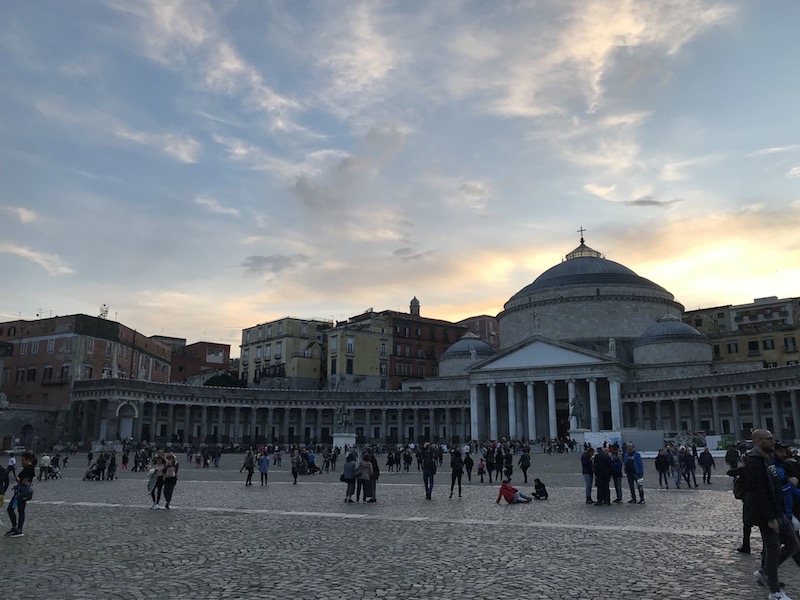


There are two equestrian statues in front of the church, that of Charles of Bourbon and his son Ferdinand IV.


On the other side of the square is the Royal Palace. The Royal Palace of Naples was built in 1600 as a palace for the King of Spain, it became the seat of the Kingdom of Naples in 1734 when the independent kingdom was created by Charles of Bourbon. It remained the royal residence and center of Bourbon power until 1860. With the defeat of the Kingdom of Naples, it became one of a number of Italian Royal Palaces.


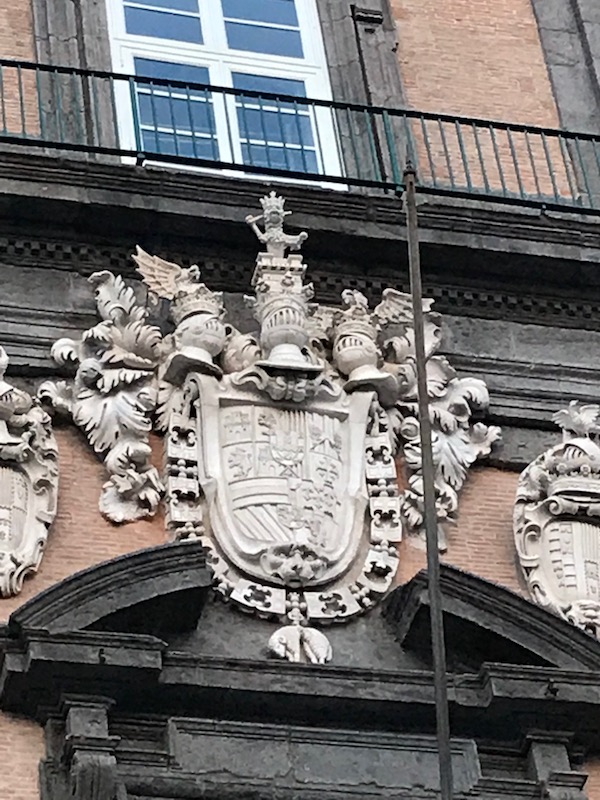


As we headed into the Royal Palace for a visit we noticed that something was going on outside ... lots of military in different dress were lined up. Not sure what it was and we didn't actually see any of whatever happened, but we grabbed a couple pictures of some of the people lined up.



As you enter, you go up through a massive staircase, with lots of military decoration, normal in royal palaces to show the might and power of the occupant to their guests, who would enter through this staircase. This grand staircase was done in the 1850's after a fire in 1837. The walls are covered in rose marble with statues of Victory and Glory intermixed with symbols of justice, war, science, art, and industry.


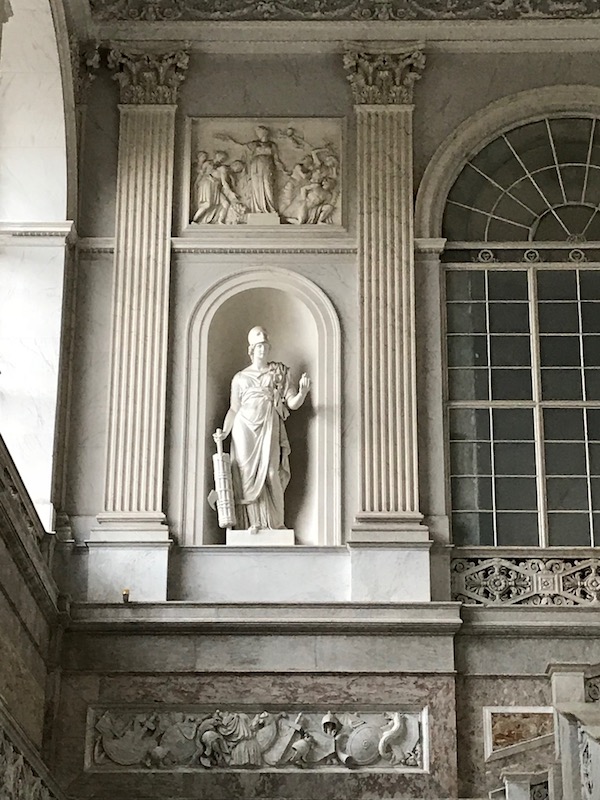

Every good royal palace had a theater, and this one was built in 1768 to celebrate the wedding of Maria Carolina of Austria with Ferdinand IV of Bourbon.




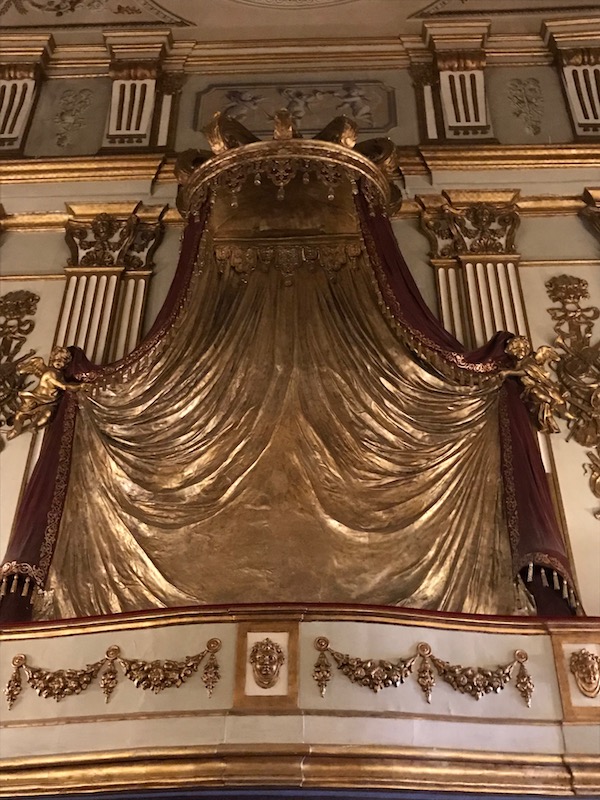
This room, the first antechamber, was remodeled in 1738 for the arrival of King Charles of Bourbon for this wedding to Maria Amalia of Saxony. The two tapestries were a gift in 1719 and are dedicated to the celebration of the Sun King, Louis XIV of France.





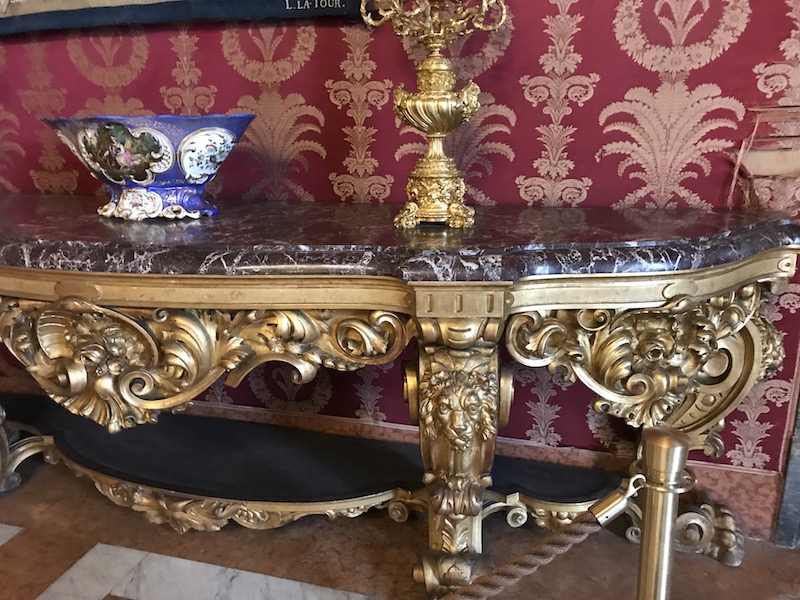
The second antechamber is more mellow in its decoration, with the main decoration being the ceiling paintings that date from around 1622.
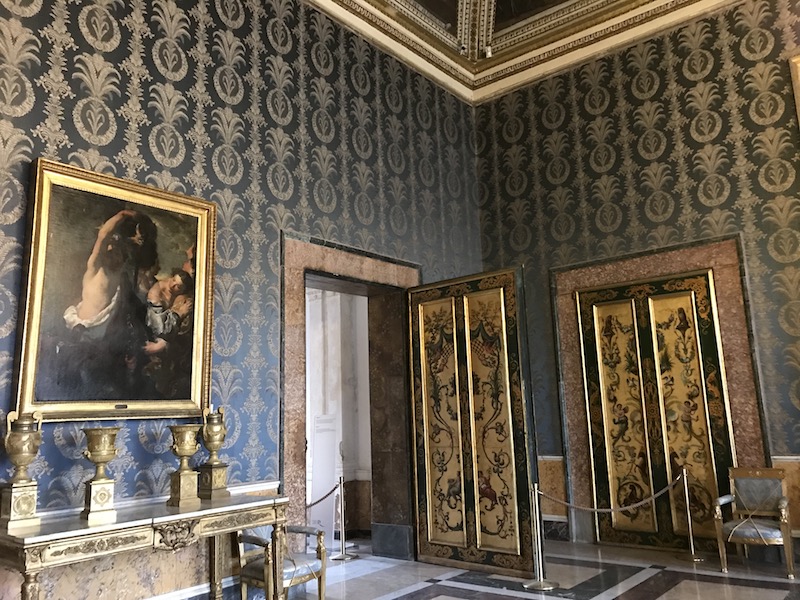
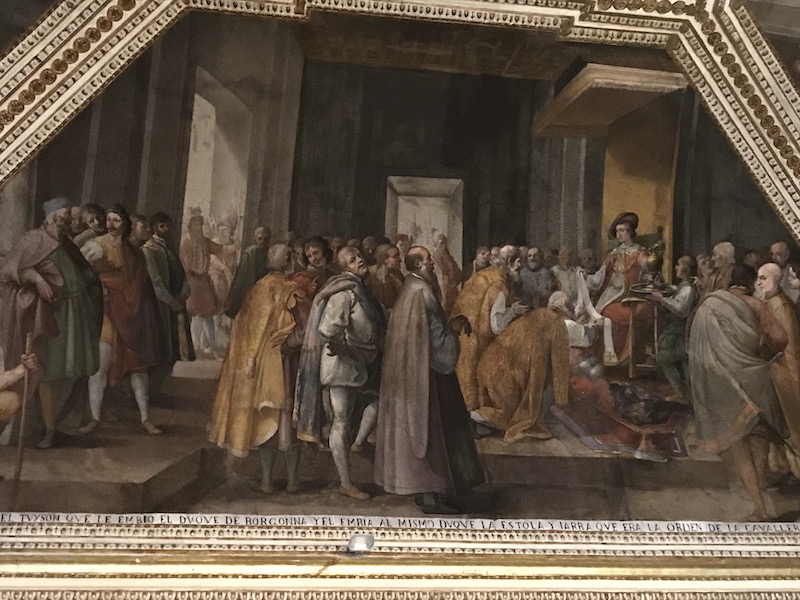
Another antechamber, with 18th-century tapestries and neo-Rococo furnishings that were previously part of the private rooms of the king and queen.


All of these antechambers, which would be used to move people (or not) into the Throne Room. This room, with the velvet and golden lace canopy over the throne, dates back to the 18th century. Around the ceiling are a series of gold stuccoes representing the 14 provinces of the Kingdom of Italy and 2 Sicily's, as they were in 1818.

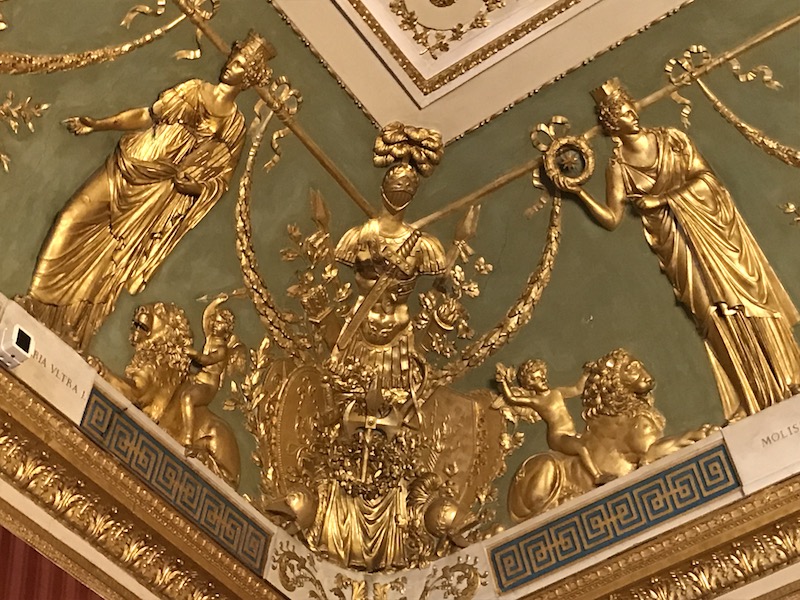


Until 1832, this was a picture gallery, the Ambassador's Hall has a grand ceiling with various different paintings showing episodes from the Life of Ferrante of Aragon. The tapestry shows an allegory of the Water element, made in wool, silk, and gold threats between 1703 and 1712.


The Flemish hall has another grand ceiling decorated with the coats of arms from Neapolitan provinces, and a neo-Gothic painting from 1840 entitled "Generosity of Tancredi: Tancredi releases Constance to Emperor Henry IV".

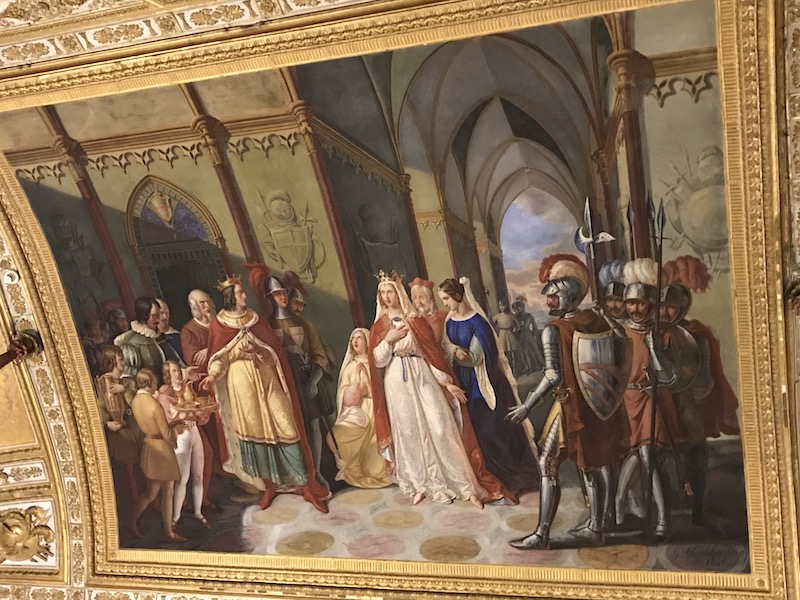
I mentioned earlier that the square was planned by Joachim-Napoléon Murat (Napoleon's brother-in-law) when he was King of Naples in the early 1800's, and this room contains several piece of furniture from that period, which were made in 1812.


Once part of the Queen's private suite of rooms, the main feature here is the Rococo white and gilt stucco ceiling, which was made during the reign of Charles of Bourbon in the 1750's.


This is one of the Queen's parlors (this was the 3rd one). The ceiling (gold and white) dates to around 1759, prior to Charles of Bourbon's departure for Spain. The clock dates to the 19th century and has a statue of Mary Stuart on top.





This large room is called Hercules Hall (although it previously was Viceroy's Hall when it was decorated with portraits of all of the Viceroys). The clock is from the early 1700's and shows Atlas holding a globe. The desk is interesting .. it is a rotating reading desk from Maria Carolina of Austria, dating from 1792. There can be multiple reading materials placed on the various shelves and then you rotate to be able to go from reading one to another.

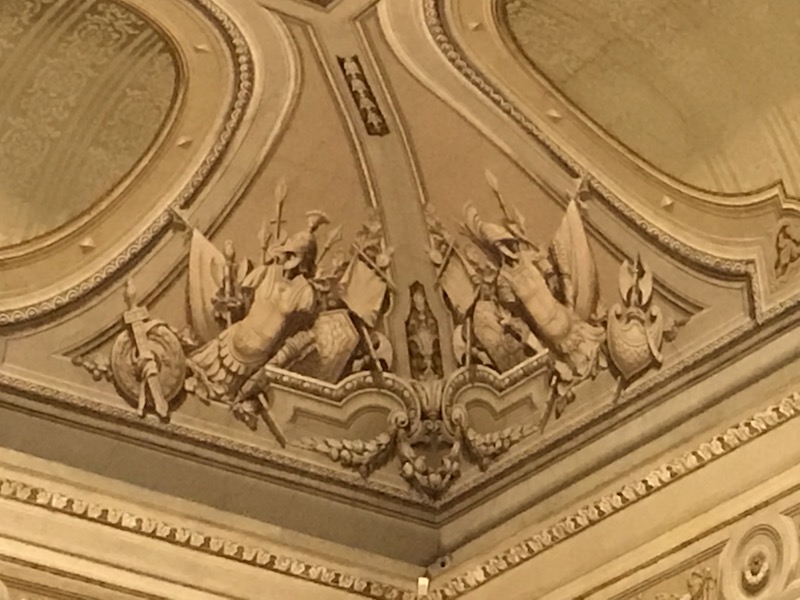


In addition to a theater, every palace needs to have its own Royal Chapel. This one was built in the 1600's but has been updated and changed several times.



Naples Cathedral was started in the 13th century but not completed until the 19th century and, therefore, has a variety of architectural styles including Gothic, Renaissance, Baroque, and Neo-gothic. The façade is made of marble with a sculptured central portal that represent the Virgin Mary and child.


The interior has a high nave with a richly decorated ceiling, as well as 14th century artwork by various Italian and French masters. The 17-century coffered ceiling houses paintings depicting the Adoration of the shepherds, the Adoration of the Magi, the Circumcision, and the Annunciation and Presentation at the Temple.

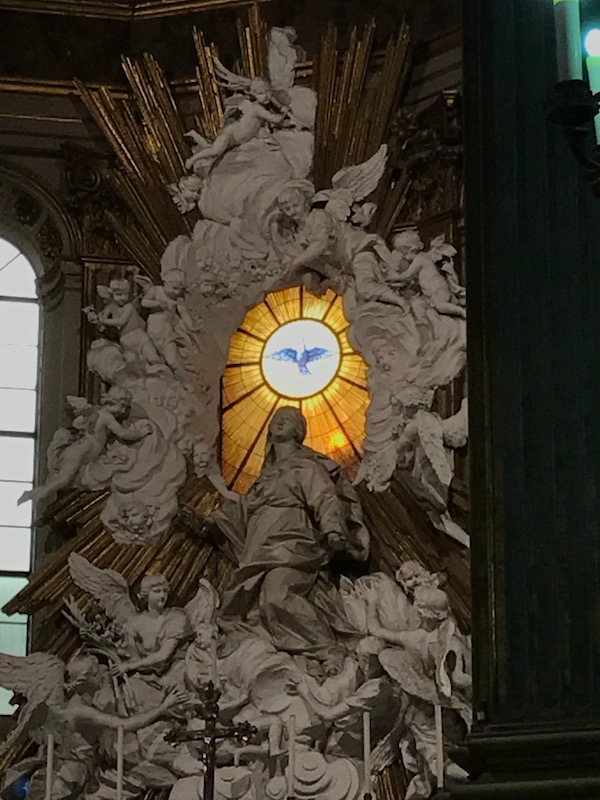


There are several side chapels, a baptistry, and a presbytery ... all highly decorated. There are various tombs also here, including Charles I.







We did two different underground tours. This one went through various rooms that were carved out by miners that were getting building materials for the city above. There are various air vents and some military objects on display, as this area was used during the World War II and at times, more than 4,000 people lived in these caves. In various parts, we had to take candles down into the areas. Here, there are large rainwater reservoirs



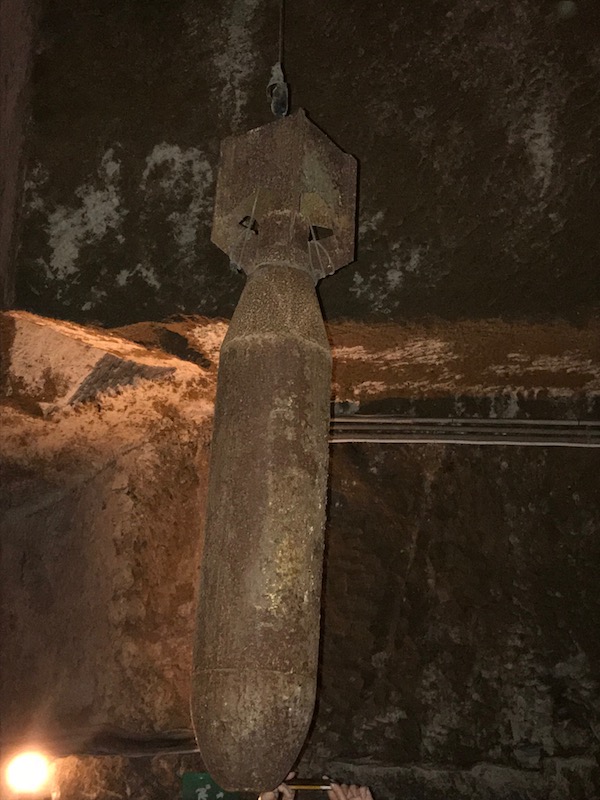

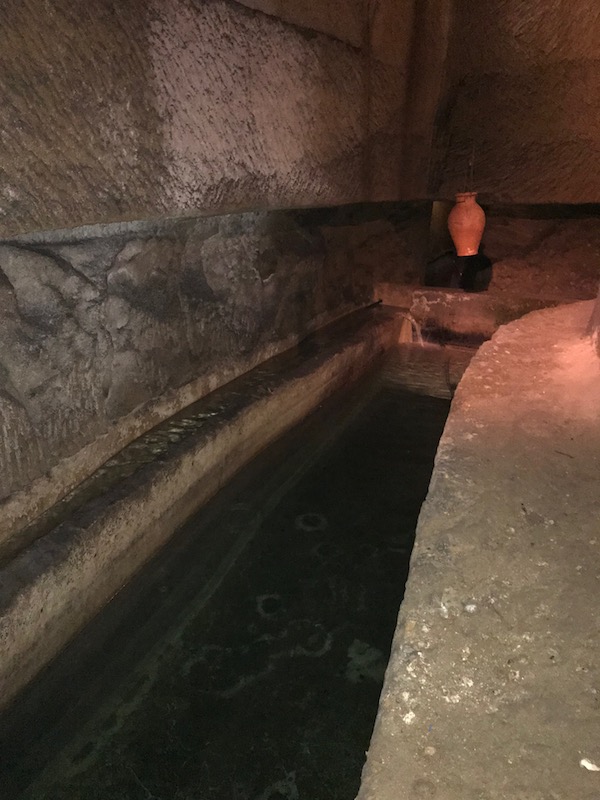



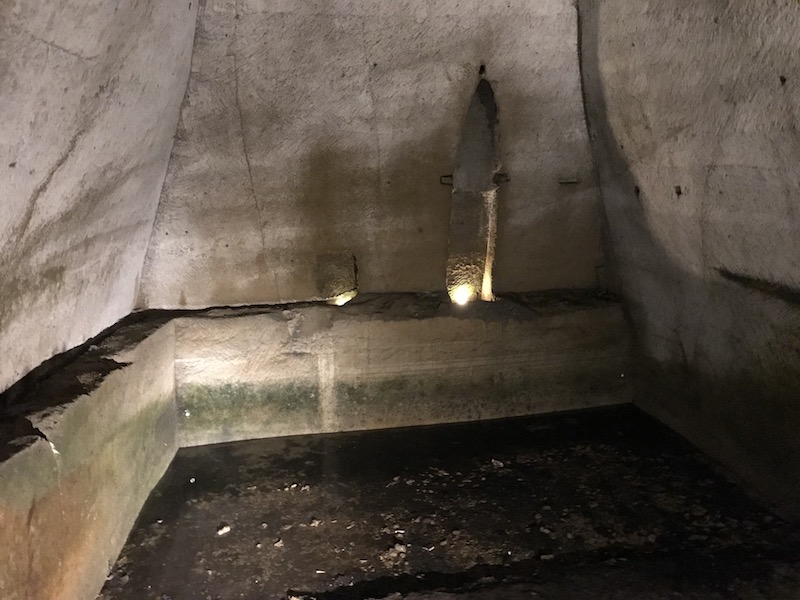
We then made our way to a buried Greco-Roman theater. It is literally in someone's wine cellar ... you go into what is/was a house and there is a set of stairs hidden under a bed that takes you down to the wine cellar. There isn't much that can been seen, but she pointed out various barrel vaults and tried to explain where the theater would be. I don't think much of it has been excavated, or if it has, it isn't open to the public.




Our guide talked about the nativity scenes (called creche's) that are done out of papier-mâché. However, she took us to a store that sells them and the majority of them just were scenes of everyday life, not related to the Christmas nativity. They are very detailed and there is a street nearby that you can buy the individual pieces and put together your own scene.



The bell-tower of Santa Chiara was started in 1338 but work stopped following the death of Robert of Anjou in 1343 when financing stopped. Work started again at the beginning of the 15th century after the earthquake of 1456 which caused the bell tower to collapse. It was finally completed around 1604 in a Baroque style. On all 4 sides, between the base and first level, are inscriptions in large gothic letters that tell the story of the foundation of the Basilica from 1310 to 1340.


Basilica of Santa Chiara was built in the early 1300's by Queen Sancha of Majorca and her husband King Robert of Naples. Originally built in a traditional Provençal-Gothic style, it was redone in the 17th century in Baroque. There was a restoration done in 1953 since it was damaged during World War II. We ended up going in when there wasn't much light coming through, unfortunately. You can see how high the flat, wooden ceiling is, and the stained glass windows on the upper level, above the side chapels that line each side.



One of the tombs here is that of Philip, son of Charles III, who died at the age of 30 (which is colorful with little angels. And then there is the tomb of King Robert (of Anjou), which is more like an altar.

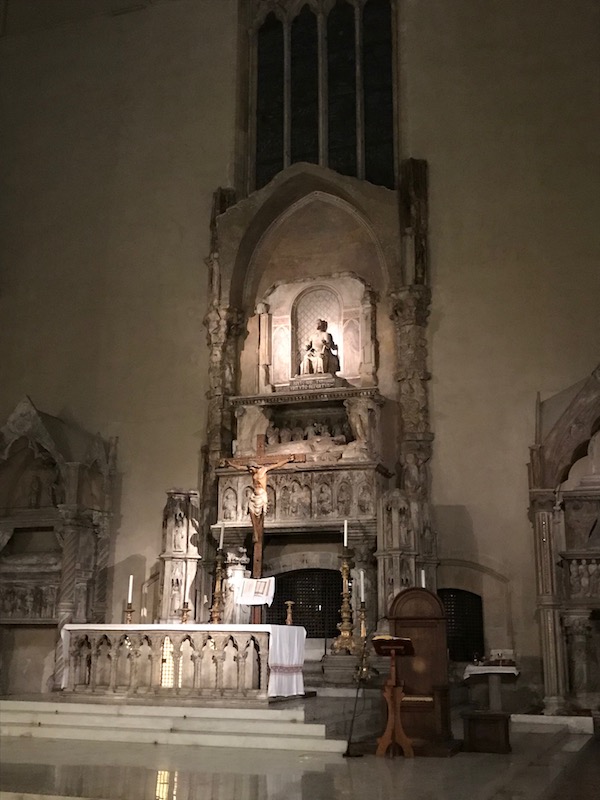
The chapel of Saint Francis of Assisi has a marble statue of the saint holding a skull in his left hand, done in 1600. There are also a couple of frescoes that also probably date to the early 17th century.


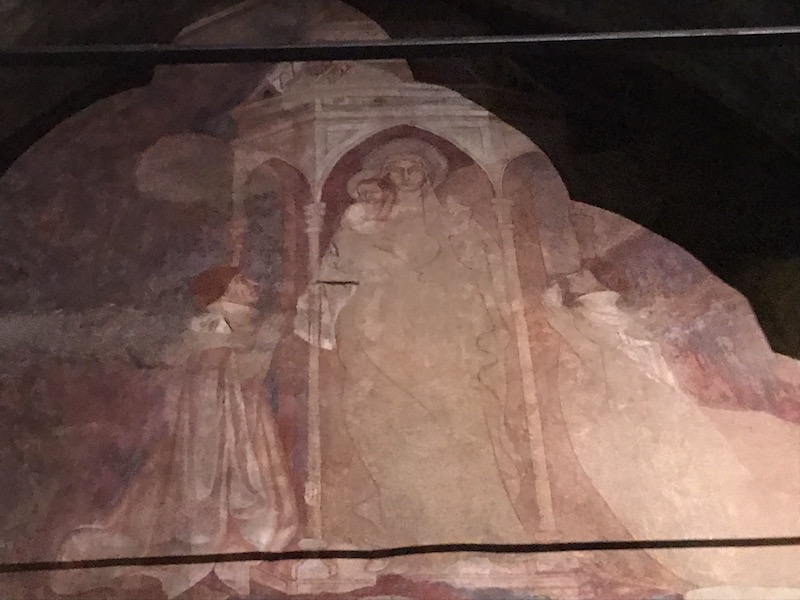
This doesn't look like a church, but indeed, it is one. Named Gesù Nuovo (New Jesus), it was originally a palace built in 1470 for the Prince of Salerno. The property was confiscated and sold to the Jesuits in 1580 and they began construction in 1584. They kept the unusual palace facade with rustic ashlar diamond projections. Like many churches we've seen here, it has a highly decorated coffered ceiling with paintings. You an definitely see the Baroque style in the altars, with marble columns and statues standing in miniature niches. The Chapel of the Crucifix has an interesting reliquary, with 70 busts of saint martyrs in golden wood, carved in 1617 by a local woodcarver.
